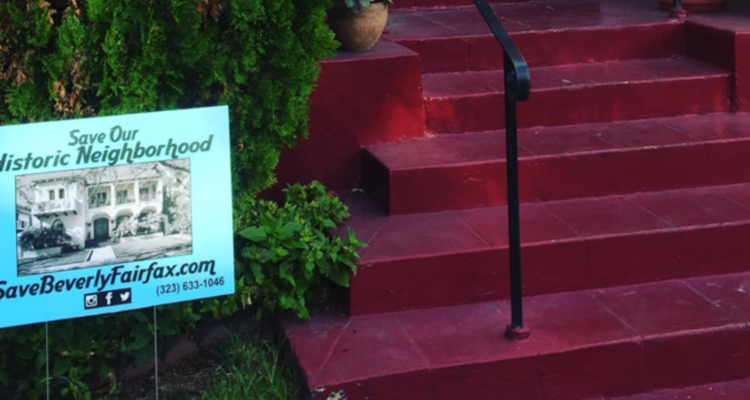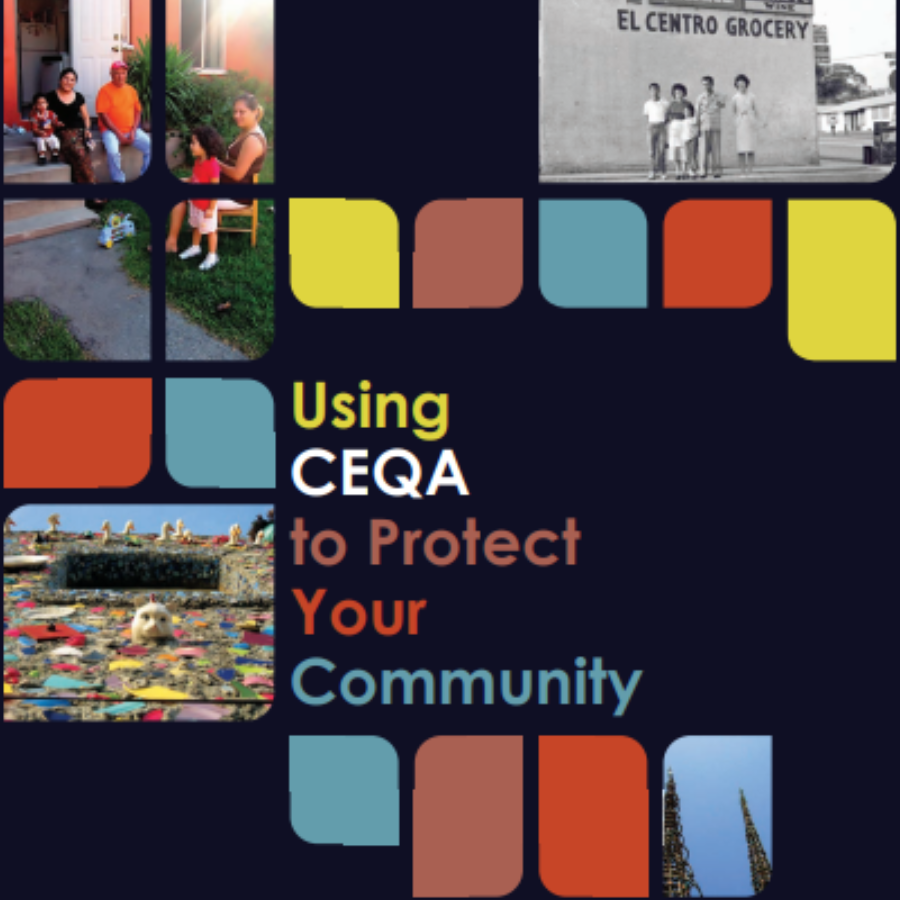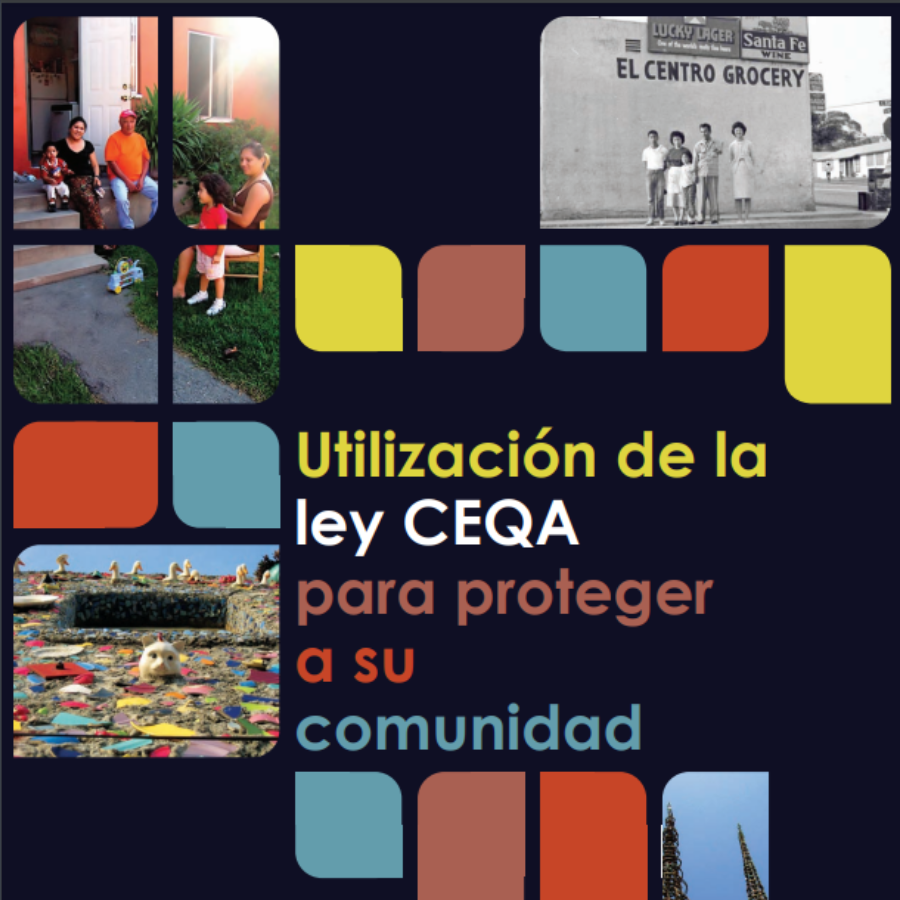
Resource
How to Save Historic Places
Useful tools available to help protect buildings and avoid demolition
Are you faced with a difficult battle to save an important historic structure in your community? While there is no single formula or method that will guarantee that a historic building will be saved, preservationists have several useful tools available to help protect buildings and avoid demolitions:
Good luck saving places you care about!
Historic Designation: Local, National, State
An individual or group may apply to an appropriate government agency to have a building designated as a historic structure.
Local designation offers the strongest protections because it requires that the City government review and approve alterations or demolition to a property. Many cities in Los Angeles County do not have historic preservation ordinances; many ordinances apply only to the exterior of a building.
Our Landmark THIS! Guide answers questions about local landmark designation and offers tips on writing a nomination.
The City of Los Angeles’s ordinance can protect interior elements of a designated building as well as the exterior. Applications are made to the Office of Historic Resources, part of the Los Angeles Department of City Planning. The nomination is reviewed by the city’s Cultural Heritage Commission, which tours the property at a future meeting, votes on the designation at a subsequent meeting and sends its recommendation to the Planning and Land Use Management Committee. A hearing is held and the committee gives its recommendation to the City Council, which has the final determination.
In Los Angeles, designation as a Historic-Cultural Monument does not guarantee that the building cannot be demolished. Instead, it merely buys time in order to create opportunities for preservation solutions to emerge. The ordinance allows the City’s Cultural Heritage Commission to object to the demolition, delaying the demolition for up to 180 days, plus another possible 180-day extension, to allow for time to preserve the monument.
Several cities with historic preservation ordinances are able to designate local historic districts. Protections afforded by historic districts are limited to building exteriors.
The California Register of Historical Resources is our state’s authoritative guide to California’s significant historic and archaeological resources. Historic buildings may be nominated to the California Register by local governments, private organizations, or individual citizens. All properties listed in or formally determined eligible for the National Register of Historic Places are automatically listed in the California Register. In many cities that do not have historic preservation ordinances, the California Register provides an important statewide resource for official historic recognition.
Applications are made to the State Office of Historic Preservation.
The National Register of Historic Places is the nation’s official list of historic resources — buildings, structures, objects, sites and districts worthy of preservation. The National Register was established by the National Historic Preservation Act of 1966, and is maintained by the National Park Service. There is a general requirement that the resource be 50 years old, but there are exceptions so that more recently constructed buildings can be listed. (The Downey McDonald’s, built in 1953, was listed when it was only 31 years old.) National Register nomination forms and information is available from the California State Office of Historic Preservation.
Office of Historic Preservation staff reviews the nomination and then submits it to the State Historical Resources Commission, which meets quarterly. If approved, the nomination to the National Park Service for final review and listing in the National Register by the Keeper of the National Register in Washington, D.C. The owner must consent to the listing in the Register; if the owner objects, the building instead receives a “determination of eligibility” for listing in the National Register, which has the identical impact of triggering environmental review for alterations to the property.
National Register listing allows owners of historic buildings to take advantage of the 20% federal rehabilitation tax credit (described in the Conservancy’s downloadable document, Incentives for Preserving Historic Buildings), one of the most important financial incentives for rehabilitating historic buildings. Listed properties may use the California Historic Building Code, a more flexible alternative to standard building codes. Contrary to popular conception, there are generally not large sums of grant funding available to assist owners and local agencies in rehabilitating National Register properties.
National Register listing does not provide an iron-clad guarantee that a building cannot be demolished or significantly altered. However, listing in the National Register does automatically trigger environmental review in California (see below) for projects which have other discretionary actions associated with them.
California Environmental Quality Act (CEQA)
The state’s California Environmental Quality Act (CEQA) requires that historic resources be recognized and considered by development projects which could destroy or impact them. Environmental assessments are done through documents called negative declarations, mitigated negative declarations, or environmental impact reports. In the first two, any negative impacts are addressed and mitigated. For environmental impacts which cannot be mitigated, an Environmental Impact Report (EIR) is prepared.
First, it is necessary to determine whether a building should be considered a historical resource as defined by CEQA. Simply because a building or resource is not currently listed in the National Register or California Register does not mean that it is not an historical resource and is not subject to CEQA environmental review. Any resource eligible for listing in the California Register is also to be considered under CEQA. Local governments therefore have an obligation not only to determine whether a resource is listed, but to also determine if it may be eligible for listing.
An EIR must consider alternatives to the proposed project that would preserve or reuse the historic resource and assess the feasibility of those alternatives. CEQA applies to historic properties when there is a discretionary action associated with an action or a project. For example, if someone applies for a demolition permit, and the local laws allow the permit to be issued automatically, there is no discretion and CEQA review is not triggered. However, if the building is designated and the designation requires the local government to review demolition applications for historic buildings, the project is discretionary and CEQA is triggered. If a proposed demolition is for a replacement project on the site which requires zoning variances or conditional use permits, there is again discretion and CEQA is triggered.
An EIR will not necessarily save a building, but by studying alternatives to demolition, the project can possibly be changed. It provides specific information about alternatives, project costs, and preservation incentives, allowing the public to make arguments to promote preservation.
Public Action
Preserving historic buildings involves many people and professional assistance. The cast of participants will vary depending on the issue and the resource.
In reviewing an Environmental Impact Report, you will want to have experts to address specific issues. If the EIR denies that a building is historic, you will need professional historians to present arguments that the resource is in fact historic.
If the developer of a proposed project states that the historic building cannot be accommodated in the project because of its location, the rehab costs are too high, or the building does not meet building codes, you will need an architect or planner to present an alternative scheme and alternative costs. The California Historical Building Code allows local jurisdictions to work with owners of historic buildings to develop alternative, performance-based methods to meet the intent of a building code without meeting the more prescriptive, specific code requirements.
If an engineer states that a building is structurally unsound, you will need an engineer who specializes in historic buildings to show how the structure can be preserved.
If there are blatant violations in the CEQA process, you may need an attorney. There are several who specialize in environmental and historic preservation law.
Broadening a constituency for preserving a historic resource is important. Bring in other organizations to write letters, testify at hearings, and participate in any public rallies. These can include neighborhood associations, historical societies, architectural and preservation organizations at the local, state and national levels, trade unions, students, or professional groups which may have some affinity to the issue.
You will need to work very closely with the elected officials who have some decision making power over the property. Contact the elected representatives, make the case for preservation, and develop a strategic lobbying effort. Hold a public rally; distribute petitions; talk to the press to get the word out.
Contact
These are just the basics. For more detailed information, please contact the Conservancy at advocacy@laconservancy.org.


